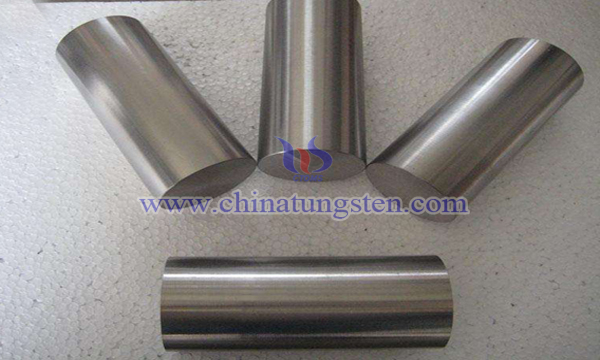Titanium-Tungsten Alloy by Molten Salt Electrolysis
- Details
- Category: Tungsten Information
- Published on Thursday, 06 June 2019 15:12
Titanium-tungsten alloy has been widely used in microelectronics and biomedicine because of their excellent properties. The alloys formed by adding W to Ti have higher strength and hardness, and the ductility loss is very small. The non-magnetic W solid solution in Ti matrix can reduce the elastic modulus of Ti and increase its radiation resistance. In the field of electronic information, with the development of semiconductor VLSI industry, the elastic modulus of Ti can be reduced. With the development of titanium-tungsten alloy, high purity titanium-tungsten alloys can be used in electrode materials, diffusion barrier layers and wiring materials in the form of thin films.

At present, the main methods for preparing titanium-tungsten alloy are high temperature vacuum melting, powder metallurgy and mechanical alloying. However, these methods have some disadvantages, such as high production cost, complex process or low purity of products, which reduce the properties of Ti-W alloys and greatly limit their application.
Fused salt electrolysis (FFC) can prepare many kinds of high melting point or refractory metals and their alloys which are difficult to produce by conventional methods. There are no liquid metals in the whole process. It is a new method to prepare Ti-W alloys with short process flow, less equipment investment, low reaction temperature and low energy consumption. The process includes:
(1)Titanium dioxide and WO3 powders with average particle size less than 2 micron and purity greater than 98% were mixed in the proportion of 9:1-3:7, and a mixture of carbon powder or carbon powder equivalent to 5-10% of the total weight of the two powders and titanium hydride powder in the proportion of 10:(1-10) was added as pore-forming agent, followed by 6-12% polyvinyl alcohol (PVA) solution or distilled water as binder, which was evenly mixed by mechanical method and mixed powders were obtained.
(2)The prepared mixed powder is molded, the pressure is 3-15 MPa, and the pressure is kept for 1 to 3 minutes to prepare a green body; or the distilled powder is continuously added to the prepared mixed powder to prepare a slurry of 60-80% concentration. The molded body is prepared by grouting in a mold, and the formed electrode body is a cylindrical shape having a diameter of not less than 60 mm and a height of 3 to 10 mm, or a thin plate having a side length of 50 to 150 mm and a height of 3 to 10 mm.
(3)The green body is dried naturally at room temperature or below 150 ℃ until the water content is not more than 5%. The titanium dioxide-WO3 mixture electrode is sintered at 900-1200 ℃ for 3-10 H. The cathode is made of high purity graphite and electrolysed with CaCl2 as molten salt under argon atmosphere. The electrolysis temperature is 800-1100 ℃ and the electrolytic voltage is 2.8-3.2V. The vacuum is first pumped to the best before electrolysis. After the electrolysis, the solid electrolyte products on the cathode are put forward to molten salt and cooled to room temperature. After the cooling, the electrolyte products are cleaned and desalted to prepare Titanium-tungsten alloy.
The preparation temperature of Ti-W alloy can be obviously reduced by molten salt electrolysis. Ti-W alloy with high purity, controllable composition and fine grain can be obtained at lower temperature. The manufacturing process is simple and the cost is relatively low.
- Tungsten Alloy Manufacturer & Supplier, Chinatungsten Online: www.tungsten-alloy.com
- Tungsten News & Prices of China Tungsten Industry Association: www.ctia.com.cn
- Molybdenum News & Price: news.molybdenum.com.cn
- Tel.: 86 592 5129696; Fax: 86 592 5129797; Email: sales@chinatungsten.com



 sales@chinatungsten.com
sales@chinatungsten.com